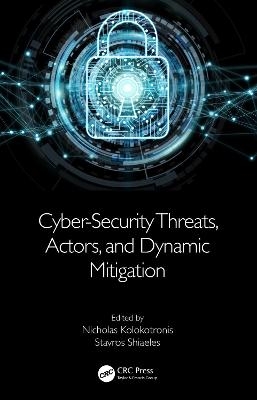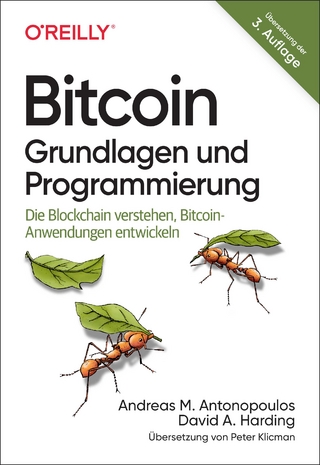
Cyber-Security Threats, Actors, and Dynamic Mitigation
CRC Press (Verlag)
978-0-367-43331-4 (ISBN)
Cyber-Security Threats, Actors, and Dynamic Mitigation provides both a technical and state-of-the-art perspective as well as a systematic overview of the recent advances in different facets of cyber-security. It covers the methodologies for modeling attack strategies used by threat actors targeting devices, systems, and networks such as smart homes, critical infrastructures, and industrial IoT.
With a comprehensive review of the threat landscape, the book explores both common and sophisticated threats to systems and networks. Tools and methodologies are presented for precise modeling of attack strategies, which can be used both proactively in risk management and reactively in intrusion prevention and response systems. Several contemporary techniques are offered ranging from reconnaissance and penetration testing to malware detection, analysis, and mitigation. Advanced machine learning-based approaches are also included in the area of anomaly-based detection, that are capable of detecting attacks relying on zero-day vulnerabilities and exploits.
Academics, researchers, and professionals in cyber-security who want an in-depth look at the contemporary aspects of the field will find this book of interest. Those wanting a unique reference for various cyber-security threats and how they are detected, analyzed, and mitigated will reach for this book often.
Nicholas Kolokotronis is an Associate Professor and head of the Cryptography and Security Group at the Department of Informatics and Telecommunications, University of the Peloponnese. He received his B.Sc. in mathematics from the Aristotle University of Thessaloniki, Greece, in 1995, an M.Sc. in highly efficient algorithms (highest honors) in 1998 and a Ph.D. in cryptography in 2003, both from the National and Kapodistrian University of Athens. Since 2004, he has held visiting positions at the University of Piraeus, University of the Peloponnese, the National and Kapodistrian University of Athens, and the Open University of Cyprus. During 2002–04, he was with the European Dynamics S.A., Greece, as a security consultant. He has been a member of working groups for the provisioning of professional cyber–security training to large organizations, including the Hellenic Telecommunications and Posts Commission (EETT). He has published more than 85 papers in international scientific journals, conferences, and books and has participated in more than 20 EU–funded and national research and innovation projects. He has been a co–chair of conferences (IEEE CSR 2021), workshops (IEEE SecSoft 2019, IEEE CSRIoT 2019, 2020, and ACM EPESec 2020), and special sessions focusing on IoT security. Moreover, he has been a TPC member in many international conferences, incl. IEEE ISIT, IEEE GLOBECOM, IEEE ICC, ARES, and ISC. He is currently a Guest Editor in "Engineering – cyber security, digital forensics and resilience" area of Springer’s Applied Sciences Journal (since 2019) and in the Reviewer Board of MDPI’s Cryptography journal (since 2020), whereas he has been an Associate Editor of the EURASIP Journal on Wireless Communications and Networking (2009–17) and a regular reviewer for a number of prestigious journals, incl. IEEE TIFS, IEEE TIT, Springer’s DCC, etc. His research interests span the broad areas of cryptography, security, and coding theory. Stavros Shiaeles is an Assistant Professor in cyber-security at the University of Portsmouth, UK. He worked as an expert in cyber-security and digital forensics in the UK and EU, serving companies and research councils. His research interest span in the broad area of cyber-security and more specifically in OSINT, social engineering, distributed denial-of-service attacks, cloud security, digital forensics, network anomaly detection, and malware mitigation. Dr Shiaeles has authored more than 60 publications in academic journals and conferences, co-chaired many workshops and conferences and actively involved in research projects as Principal Investigator leading his cyber-security research team. He is currently a Guest Editor in the topical collection "Cyber security, digital forensics and resilience" at Springer’s Applied Sciences Journal (since 2019), Topic Editor at MDPI Forensic Sciences Journal (since 2020), Guest editor in the Special Issue "Advancements in Networking and Cyber Security" at MDPI Electronics Journal (2020), Guest editor in the "Special Issue on Novel Cyber-Security Paradigms for Software-defined and Virtualized Systems" at Elsevier Computer Networks Journal (2020), Active member at IEEE Technical Committee on Information Infrastructure and Networking (TCIIN) and a regular reviewer for several prestigious journals. Further to his academic qualifications, he holds a series of professional certifications, namely EC-Council Certified Ethical Hacker (CEH), EC-Council Advanced Penetration Testing (CAST611), ISACA Cobit 5 Foundation and a Cyberoam Certified Network and Security Professional (CCNSP), and he is EC-Council accredited instructor providing professional certifications training on cyber-security and penetration testing. He is also a Fellow of the BCS and a Fellow of the Higher Education Academy in the UK. Before entering academia, Dr Shiaeles was in the industry, where he has more than ten years of experience, and he has worked on various aspects of IT and cyber-security, gaining invaluable hands-on knowledge on various systems and software developing.
1. Cyber–attackers’ profiling. 2. Reconnaissance. 3. System threats. 4. Cryptography threats. 5. Network threats. 6. Malware detection and mitigation. 7. Dynamic risk management. 8. Attack graph generation. 9. Intelligent intrusion response.
| Erscheinungsdatum | 23.04.2021 |
|---|---|
| Zusatzinfo | 50 Tables, black and white; 102 Line drawings, black and white; 25 Halftones, black and white; 127 Illustrations, black and white |
| Verlagsort | London |
| Sprache | englisch |
| Maße | 156 x 234 mm |
| Gewicht | 689 g |
| Themenwelt | Informatik ► Netzwerke ► Sicherheit / Firewall |
| Technik | |
| ISBN-10 | 0-367-43331-1 / 0367433311 |
| ISBN-13 | 978-0-367-43331-4 / 9780367433314 |
| Zustand | Neuware |
| Informationen gemäß Produktsicherheitsverordnung (GPSR) | |
| Haben Sie eine Frage zum Produkt? |
aus dem Bereich


